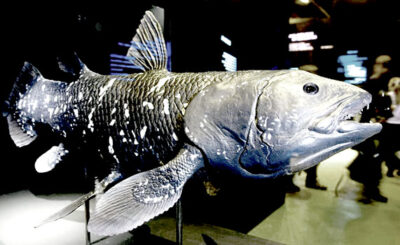by Richard William Nelson | May 29, 2012
 The search for an explanation for the origin of life started long before the publication of Charles Darwin’s Origin of Species in 1859. The first naturalistic theory of life arising from non-life, known as spontaneous generation, is attributable to Aristotle and ancient Greek philosophy.
The search for an explanation for the origin of life started long before the publication of Charles Darwin’s Origin of Species in 1859. The first naturalistic theory of life arising from non-life, known as spontaneous generation, is attributable to Aristotle and ancient Greek philosophy.
Darwin rejected the Genesis account of creation written by Moses. Lingering doubts over the origins of life, however, forced Darwin to reject atheism and embrace agnosticism –
“The mystery of the beginning of all things is insoluble by us, and I, for one, must be content to remain an Agnostic.”
Continue Reading
by Richard William Nelson | May 22, 2012
 Andrew J. Wendruff and Mark V. H. Wilson of the University of Alberta added a new dimension to the ongoing coelacanth saga this week in the paper “A fork-tailed coelacanth, Rebellatrix divaricerca,” published in the Journal of Vertebrate Paleontology.
Andrew J. Wendruff and Mark V. H. Wilson of the University of Alberta added a new dimension to the ongoing coelacanth saga this week in the paper “A fork-tailed coelacanth, Rebellatrix divaricerca,” published in the Journal of Vertebrate Paleontology.
In the paper, Wendruff and Wilson present a newly discovered coelacanth species found surprisingly on the rocky slopes of the Canadian Rockies, British Columbia.
The species named Rebellatrix divaricerca means “rebel coelacanth (with a) forked tail.” Far different from today’s Indian Ocean coelacanths, these ancient rebel fast-swimming predators further undermine attempts to develop a cohesive coelacanth evolution saga.
Continue Reading
 The search for an explanation for the origin of life started long before the publication of Charles Darwin’s Origin of Species in 1859. The first naturalistic theory of life arising from non-life, known as spontaneous generation, is attributable to Aristotle and ancient Greek philosophy.
The search for an explanation for the origin of life started long before the publication of Charles Darwin’s Origin of Species in 1859. The first naturalistic theory of life arising from non-life, known as spontaneous generation, is attributable to Aristotle and ancient Greek philosophy.
 Andrew J. Wendruff
Andrew J. Wendruff